| Author |
Message |
    
museum_of_motorsports_and_technology
New member
Username: museum_of_motorsports_and_technology
Post Number: 1
Registered: 03-2009
| | Posted on Friday, March 13, 2009 - 04:47 pm: | 




|
Hello,
I have what I believe to be 1912 - 1913 four cylinder engines in my collection and both are without spark plugs. One engine is a Waterman four cylinder with copper water jackets and the other is an Erd with nickeled water jackets. Both engines are original/unrestored "as found". I measured the threads and the size is approx 0.825 OD and the threads are 14 threads per inch. I have tried to attach pictures to this post (my first) several times but each time I get an error message. Can someone tell me a plug number and/or source to purchase period plugs (new or used).
Thanx,
Todd |
    
keith
Senior Member
Username: keith
Post Number: 244
Registered: 02-2002

| | Posted on Friday, March 13, 2009 - 08:55 pm: | 




|
Todd, Your engines take Spark Plugs with a 1/2-14 pipe thread. There are a couple of manufactures for new plugs, but I wouldn't recommend them. Your engines deserve early plugs. Your best bet is to watch Ebay and contact some of the individuals selling plugs, and see if they have multiples.
Keith |
    
keith
Senior Member
Username: keith
Post Number: 245
Registered: 02-2002

| | Posted on Friday, March 13, 2009 - 09:03 pm: | 




|
Todd,
Search EBay for seller "Pludge". He is a collector and also sell plugs. |
    
gryphon
Member
Username: gryphon
Post Number: 8
Registered: 07-2007
| | Posted on Saturday, March 14, 2009 - 03:20 am: | 




|
Also look for "dmckinsey33" as he has an E-Bay site along with a mail order catalog of 80,000 plus spark plugs. You can write him for a catalog, which costs two dollars, refundable on your first order. I can't find the address now, but he has responded right away via his E-Bay site. Good guy. Good luck, Jon |
    
museum_of_motorsports_and_technology
New member
Username: museum_of_motorsports_and_technology
Post Number: 2
Registered: 03-2009
| | Posted on Sunday, March 15, 2009 - 01:39 pm: | 




|
Hello and thanx for the help. I have contacted dmckinsey33 as suggested and he can help me out. As I shared previously, I was unable to post pics due to error messages. I suspect it is because I don't know how to compress pics. If anyone would be so kind, let me know and I'll send pics to you via email and you could help me post. I also have a four cylinder, 2 stroke (portless), rotary valve, supercharged engine to share. One of a kind from 1930 built by Skinner. Was made with engine mounts and bell housing mounts common to a Ford Model A. Ran too hot as a race car engine so supposedly spent its' life in a race boat.
Regards,
Todd |
    
billschaller
Senior Member
Username: billschaller
Post Number: 236
Registered: 12-2003

| | Posted on Monday, March 16, 2009 - 12:29 am: | 




|
go ahead and send pics to me
[email protected] |
    
billschaller
Senior Member
Username: billschaller
Post Number: 237
Registered: 12-2003

| | Posted on Monday, March 16, 2009 - 01:13 pm: | 




|
Here is Todd's Waterman.
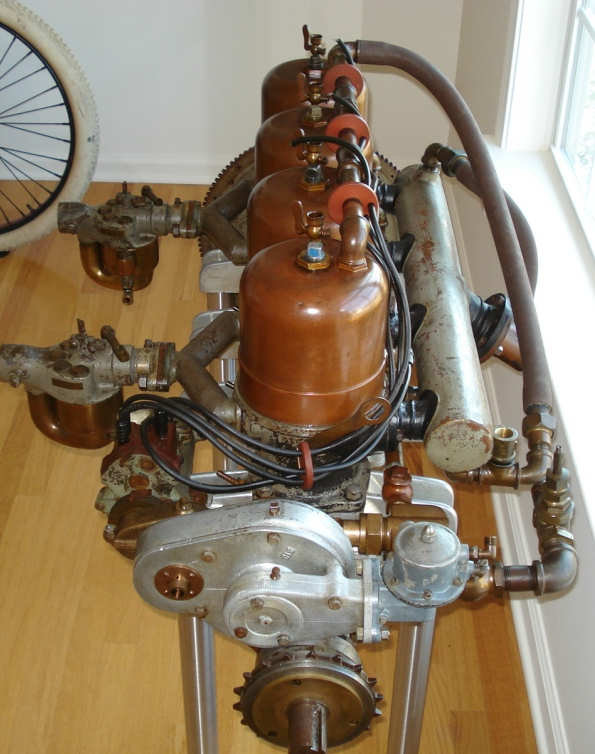
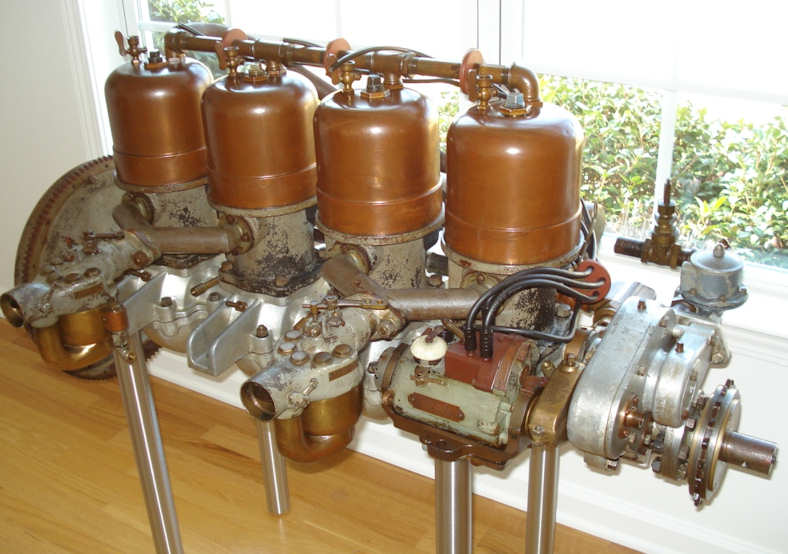 |
    
billschaller
Senior Member
Username: billschaller
Post Number: 238
Registered: 12-2003

| | Posted on Monday, March 16, 2009 - 01:18 pm: | 




|
here is Todd's Erd.
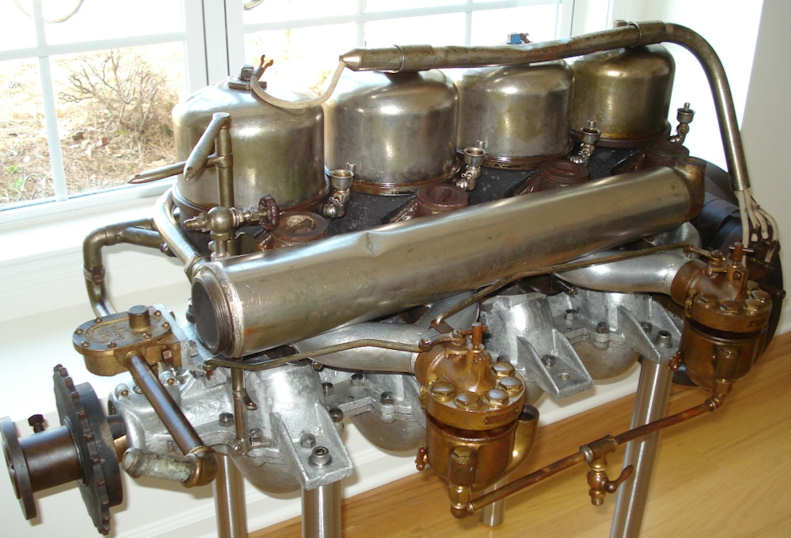
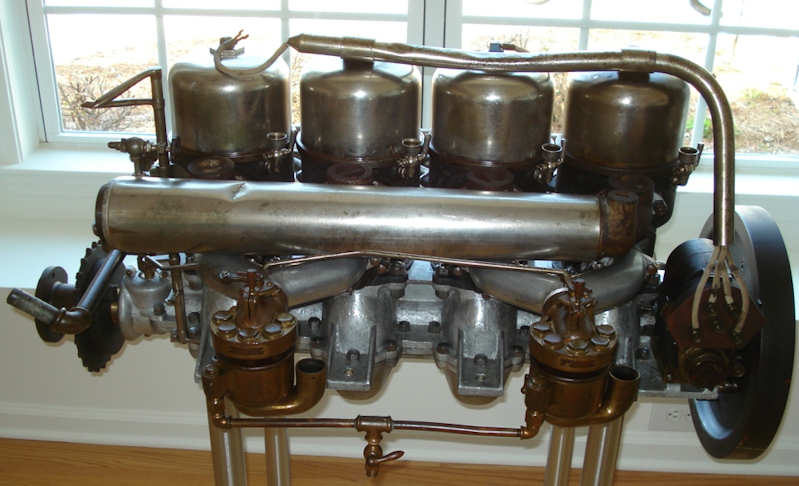 |
    
billschaller
Senior Member
Username: billschaller
Post Number: 239
Registered: 12-2003

| | Posted on Monday, March 16, 2009 - 01:26 pm: | 




|
Here is Todd's Skinner.
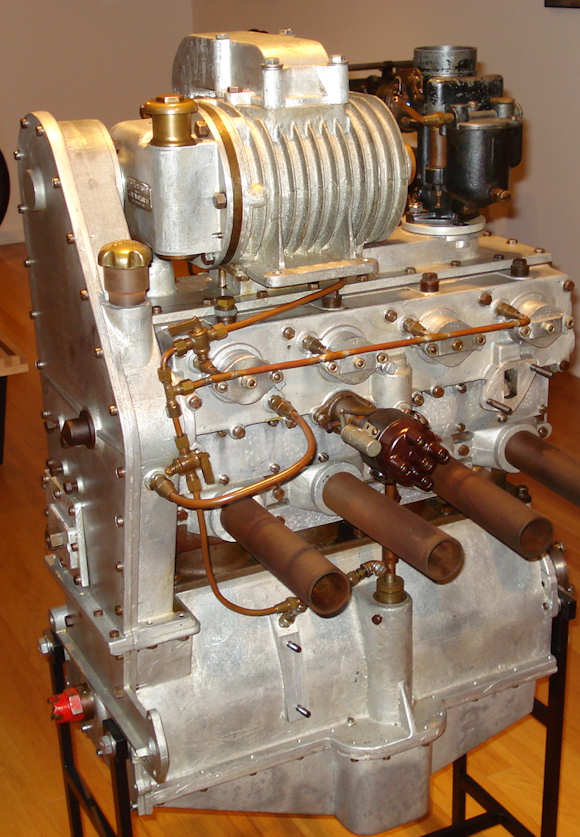
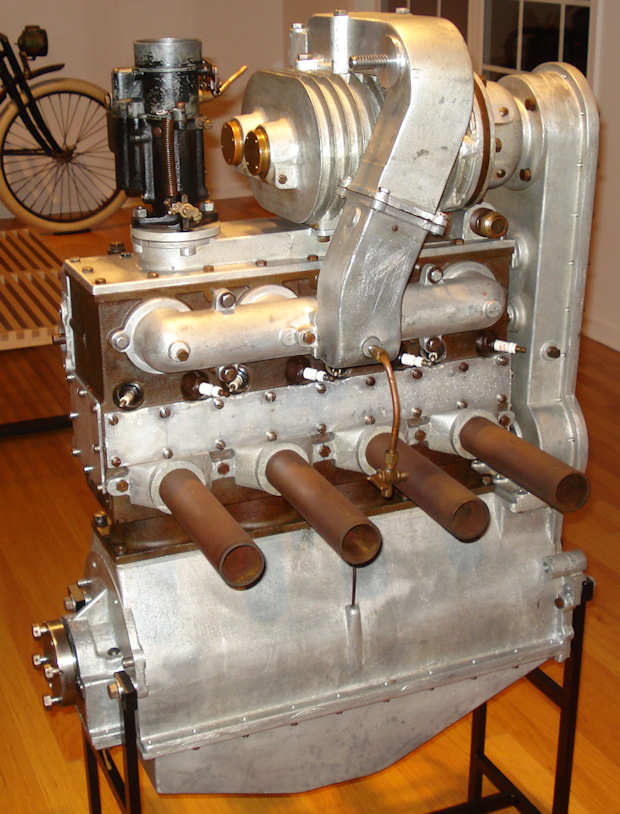
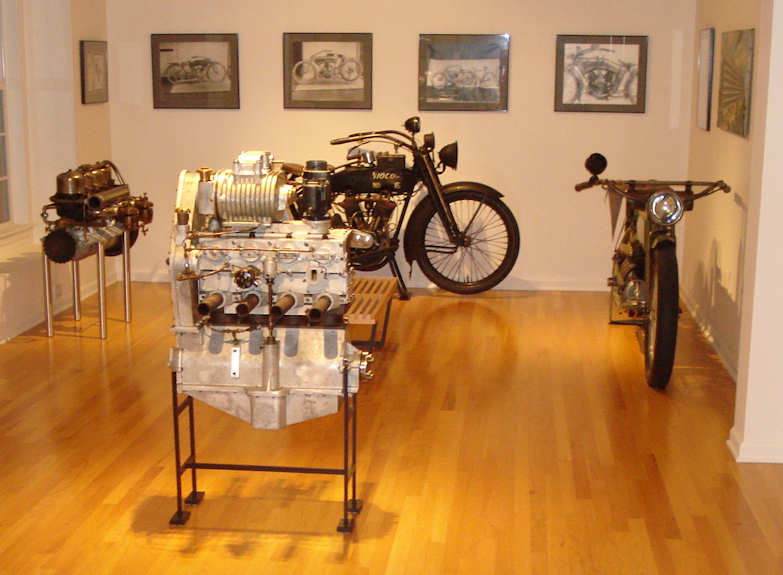 |
    
museum_of_motorsports_and_technology
New member
Username: museum_of_motorsports_and_technology
Post Number: 3
Registered: 03-2009
| | Posted on Monday, March 16, 2009 - 01:35 pm: | 




|
Bill, Thanx again for posting my pics,
Here is the story on the Skinner four cylinder... two stroke... supercharged... rotary valve engine.
- built by someone named Mr. Skinner in New England area in 1928-1929. yes, it runs
- motor mounts and rear clutch bell housing mounts are common to a Ford Model A
- water cooled cylinder block and head is cast as one unit from grey iron
- upper crankcase, oil pan, front chaincase and manifolds are aluminum sand castings
- supercharger is by Switzer-Cummins of Indianapolis, Indiana
- carburetor is a downdraft Stromberg
- cylinder head is machined to run two spark plugs per cylinder
- "camshaft" and supercharger are driven by side-by-side chains from the crankshaft
- exhaust vents to atmosphere at BDC out the right and left side of engine (eight exhaust pipes)
- rotary valve shaft spins at crank speed (1 : 1)
- although the engine is two cycle, there are no transfer ports
- whereas many four cylinder engines have a firing order of 1, 3, 4, 2 this engine has a firing order of 1, 4, 2, 3
- crankshaft is special construction with knife edge counterweights and runs on five pressure fed main bearings
- crankshaft big end journals are at 90 degrees to each other
- intake manifold has a rudimentary blowoff valve to vent to atmosphere if supercharger pressure gets too high
- pistons are flat top with three compression rings each (no oil ring)
- intake is by four separate rotary valves (one for each cylinder)
- rotary valve rotational axis is 90 degrees to the rotary valve shaft
- each rotary valve is the shaped like a shot glass, only about twice as tall
Each rotary valve has a slot in it that opens to the combustion chamber. I did a quick mapping of the system:
- intake begins to open when the exhaust port is 50% open
- intake is 100% open when the exhaust port is 100% open
- intake begins to close when exhaust port is 50% closed
- intake is 100% closed when the exhaust port is 100% closed
Understanding this mapping explains the need for the supercharger. There is no event that will draw in the intake charge naturally.
Regards,
Todd |


